 Base Antarctica Belgrano I was located on Piedrabuena Bay on the Filchner Ice Shelf at 77°46’ South, 38°11’ West. At the time of its inauguration in 1954 it became Argentina’s southernmost permanent base. It was shut down in 1980 over safety concerns due to it being built on increasingly unstable ice, which endangered both personnel and equipment.
Base Antarctica Belgrano I was located on Piedrabuena Bay on the Filchner Ice Shelf at 77°46’ South, 38°11’ West. At the time of its inauguration in 1954 it became Argentina’s southernmost permanent base. It was shut down in 1980 over safety concerns due to it being built on increasingly unstable ice, which endangered both personnel and equipment.
A new, larger replacement base was established further south, and named Belgrano II (WAP ARG-Ø6) followed by Belgrano III (WAP ARG-Ø7) which became the southernmost of the three.
Brief history of Base General Belgrano I:
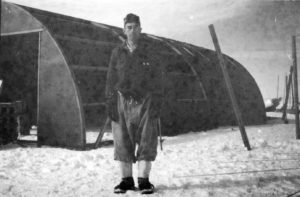 On 18 November 1954 the Antarctic Naval Task Force commanded by Capt. Alicio E. Ogara (see picture below ) sailed from Buenos Aires with the objective of setting up a base on the Filchner Ice Shelf that would serve as a launch point for expeditions to the South Pole.
On 18 November 1954 the Antarctic Naval Task Force commanded by Capt. Alicio E. Ogara (see picture below ) sailed from Buenos Aires with the objective of setting up a base on the Filchner Ice Shelf that would serve as a launch point for expeditions to the South Pole.
On 2 January 1955 the expedition sailed up to the southernmost point of the Weddell Sea at 78° 01′ South. At the time it was the highest austral latitude ever reached by boat, and a new world record was set.
The task force then sailed north along the ice wall, seeking for an anchoring place.
On 3 January 1955 Brig.Gen. Hernan Pujato, director of the Argentine Antarctic Institute, flew over the ice shelf area aboard a helicopter to choose a suitable place to mount the base, selecting a small cove where the high wall of ice sloped down to the sea. The unloading of the materials, equipment, tools, instruments and consumables was conducted from ARA General San Martín. The team built a main house, four quonset huts, food stores and hangar. They left on the new base enough fuel for three years.
the sea. The unloading of the materials, equipment, tools, instruments and consumables was conducted from ARA General San Martín. The team built a main house, four quonset huts, food stores and hangar. They left on the new base enough fuel for three years.
Belgrano I (WAP ARG-Ø5) was shut down after 25 years of continuous service due to the fast deterioration of the ice barrier it was sitting on; new often hidden cracks and crevices endangered the on-duty personnel and material. The Base was closed on January 1980 and all of its staff and equipment were evacuated by helicopters operating from the Icebreaker ARA Almirante Irizar.
According to WAP-WACA Directory the following stations have been activre at Base Berlgrano I from 1959 through 1963: LU1ZT, LU1ZX, LU1ZW, LU2ZX, LU2ZRM, LU9ZX..Any further information about other stations active from there could be sent to IK1GPG (see QRZ.com
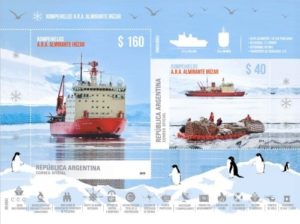 Stamps issued by the Argentine Post Office whose vignettes have designs related with the thematic of the Argentine Antarctic and the Malvinas Islands are always a source of great interest, whether it is a commemoration of special events, expeditions, scientific activities, Antarctic bases, Argentine ships that sail in the Antarctic waters.
Stamps issued by the Argentine Post Office whose vignettes have designs related with the thematic of the Argentine Antarctic and the Malvinas Islands are always a source of great interest, whether it is a commemoration of special events, expeditions, scientific activities, Antarctic bases, Argentine ships that sail in the Antarctic waters.
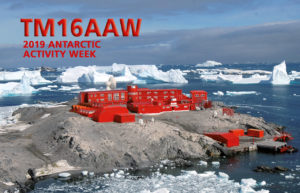 Last Antarctic Activity Week (Febr.2019) has seen a great participation of Hams from several countries WW. Since 16 years, François F8DVD, one of the most active Antarctic enthusiasts, takes part in the event with a special callsign as usual.
Last Antarctic Activity Week (Febr.2019) has seen a great participation of Hams from several countries WW. Since 16 years, François F8DVD, one of the most active Antarctic enthusiasts, takes part in the event with a special callsign as usual. Europe’s dedicated polar-monitoring satellite has produced its sharpest view yet of the shape of Antarctica.
Europe’s dedicated polar-monitoring satellite has produced its sharpest view yet of the shape of Antarctica. all. “So, the benefit in the Antarctic Peninsula for example promises to be massive,” says Dr Noel Gourmelen from Edinburgh University and the UK Centre for Polar Observation and Modelling (CPOM).
all. “So, the benefit in the Antarctic Peninsula for example promises to be massive,” says Dr Noel Gourmelen from Edinburgh University and the UK Centre for Polar Observation and Modelling (CPOM).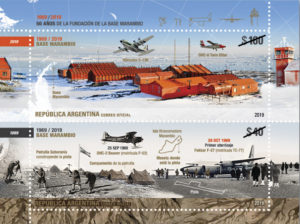 A new postal emission for the fiftieth anniversary of Marambio Base foundation
A new postal emission for the fiftieth anniversary of Marambio Base foundation 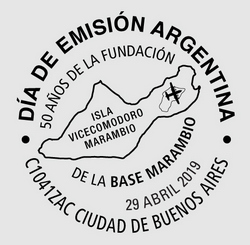
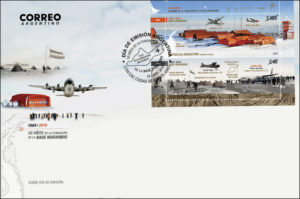
 Bob Hawke maintained that Antarctica was too important to the whole global ecosystem and that mining would always be catastrophically dangerous in that environment …
Bob Hawke maintained that Antarctica was too important to the whole global ecosystem and that mining would always be catastrophically dangerous in that environment …
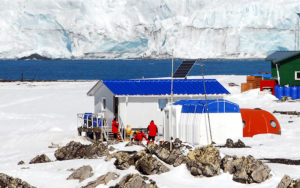 Doctor Guillermo Mann Base (formerly Camp Shirreff) is the second of the three research Bases that INACH (
Doctor Guillermo Mann Base (formerly Camp Shirreff) is the second of the three research Bases that INACH (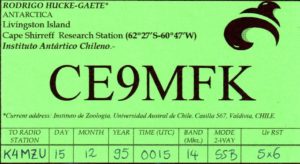 Doctor Guillermo Mann Base (WAP CHL-Ø8) has allowed to generate knowledge in terrestrial and marine biology, and disciplines such as geology and glaciology.
Doctor Guillermo Mann Base (WAP CHL-Ø8) has allowed to generate knowledge in terrestrial and marine biology, and disciplines such as geology and glaciology. Over the weekend, brilliant auroras lit up the skies above Macquarie Island, (
Over the weekend, brilliant auroras lit up the skies above Macquarie Island, (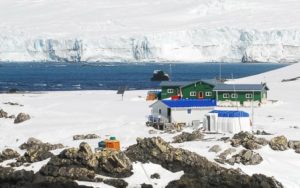 Shirreff Base (official name Cape Shirreff Field Station),is located at 62°28’12” South, 60°46’16” West, on the East side of Cape Shirreff on Joannes Paulus II Peninsula on Livingston Island of the South Shetlands. It’s a seasonal field station operated by the United States, opened in 1996 .
Shirreff Base (official name Cape Shirreff Field Station),is located at 62°28’12” South, 60°46’16” West, on the East side of Cape Shirreff on Joannes Paulus II Peninsula on Livingston Island of the South Shetlands. It’s a seasonal field station operated by the United States, opened in 1996 .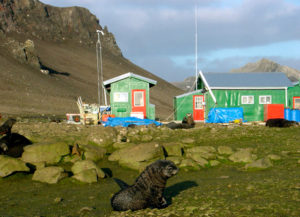 studies at Cape Shirreff field Station.
studies at Cape Shirreff field Station. Base Antarctica Belgrano I was located on Piedrabuena Bay on the Filchner Ice Shelf at 77°46’ South, 38°11’ West. At the time of its inauguration in 1954 it became Argentina’s southernmost permanent base. It was shut down in 1980 over safety concerns due to it being built on increasingly unstable ice, which endangered both personnel and equipment.
Base Antarctica Belgrano I was located on Piedrabuena Bay on the Filchner Ice Shelf at 77°46’ South, 38°11’ West. At the time of its inauguration in 1954 it became Argentina’s southernmost permanent base. It was shut down in 1980 over safety concerns due to it being built on increasingly unstable ice, which endangered both personnel and equipment. On
On  the sea. The unloading of the materials, equipment, tools, instruments and consumables was conducted from ARA General San Martín. The team built a main house, four quonset huts, food stores and hangar. They left on the new base enough fuel for three years.
the sea. The unloading of the materials, equipment, tools, instruments and consumables was conducted from ARA General San Martín. The team built a main house, four quonset huts, food stores and hangar. They left on the new base enough fuel for three years.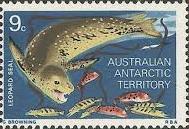 As the white continent warms, shrinking sea ice is changing life for
As the white continent warms, shrinking sea ice is changing life for scientific research in Antarctica. The Alfred Wegener Institute for Polar and Marine Research (AWI) as the national co-ordinator, enables Germany to fulfill this role by its research, long term monitoring and survey activities. It provides the main mobile and stationary infrastructure for Antarctic research, and thus maintains the permanent German presence in Antarctica. The new institute was named after one of the really prominent German polar researchers, who developed the first in-depth ideas about continental drift.
scientific research in Antarctica. The Alfred Wegener Institute for Polar and Marine Research (AWI) as the national co-ordinator, enables Germany to fulfill this role by its research, long term monitoring and survey activities. It provides the main mobile and stationary infrastructure for Antarctic research, and thus maintains the permanent German presence in Antarctica. The new institute was named after one of the really prominent German polar researchers, who developed the first in-depth ideas about continental drift.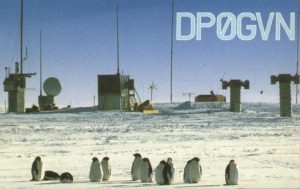 tion. A location on the Filchner-Ronne Ice Shelf at 77°36’South and 50° 40’West was selected as a first choice.
tion. A location on the Filchner-Ronne Ice Shelf at 77°36’South and 50° 40’West was selected as a first choice.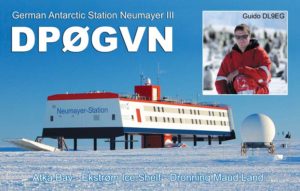 Planned under the supervision of Hartwig Gernandt, Neumayer III Station (70°40’S and 08°16’W)
Planned under the supervision of Hartwig Gernandt, Neumayer III Station (70°40’S and 08°16’W)